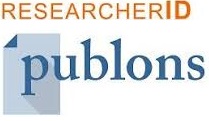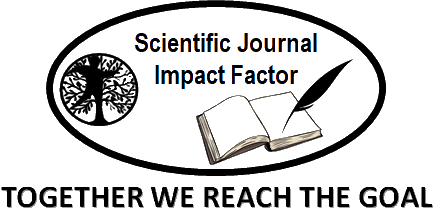Critical Review on Scientific Papers by Final-Year Language Students at Universitas Terbuka: An Error Analysis Study
Abstract
Academic writing involves a complex and comprehensive structure, requiring not only adherence to formal conventions but also a strong emphasis on comprehension and language proficiency. This study aimed to analyze language errors in academic writing produced by language students at Universitas Terbuka using a descriptive qualitative design. The analysis was based on the surface strategy taxonomy and key linguistic components, including phonology, morphology, semantics, syntax, and discourse. These linguistic aspects provided a comprehensive framework for identifying and categorizing the errors. The results revealed a total of 314 language errors. Within the surface strategy taxonomy, omission was the most frequent error type (50 instances), while misordering was the least frequent (15 instances). In terms of linguistic categories, syntax errors were the most common (90 instances), whereas phonological errors were the least frequent (15 instances). The findings indicate that students often omit essential linguistic elements, leading to contextual ambiguities. Moreover, a limited understanding of syntax significantly contributes to confusion and reduced clarity for readers.
Keywords
Full Text:
PDFReferences
H. G. Tarigan, Berbicara; ssebagai suatu keterampilan berbahasa. Bandung: Angkasa, 2019.
J. R. Wilson, “How to Do Public Writing,” Public Humanit., vol. 1, p. e100, 2025.
B. C. Palmer, Developing Cultural Literacy through the Writing Process: Empowering All Learners. ERIC, 1994.
D. Nunan, “Language Teaching Methodology Prentice Hall,” Int. Ltd, 1991.
S. A. Rachman, R. Rival, and H. Haerul, “Analisis Kesalahan-Kesalahan Gramatikal Dalam Tulisan Bahasa Inggris Mahasiswa Pendidikan Guru Sekolah Dasar FIP UNM,” JIKAP PGSD J. Ilm. Ilmu Kependidikan, vol. 3, no. 3, p. 249, 2019.
H. D. Brown and H. Lee, Principles of language learning and teaching: A course in second language acquisition. Taylor & Francis, 2025.
T. N. Fitria, “Error Analysis of English Abstract in International Journal of Economics, Business and Accounting Research (IJEBAR),” Al-Lisan, vol. 5, no. 2, pp. 164–181, Sep. 2020, doi: 10.30603/al.v6i2.1335.
C. James, Errors in language learning and use: Exploring error analysis. Routledge, 2013.
H. Hamzah, “An analysis of the written grammatical errors produced by freshment students in english writing,” Ling. Didakt. J. Bhs. dan Pembelajaran Bhs., vol. 6, no. 1, pp. 17–25, 2012.
W. H. Putra, Analisis Kesalahan Berbahasa Arab (Teori, Metodologi, Dan Implementasi). Penerbit Adab, 2022.
Dawud, “Prosedur analisis kesalahan berbahasa,” J. DIKSI, vol. 15, no. 1, pp. 88–95, 2008.
N. Oktafiani, G. Goziyah, and I. Solihat, “Analisis kesalahan berbahasa pada artikel pendidikan koran Radar Banten dan implikasinya dalam pembelajaran bahasa Indonesia di SD Dilaraf Islamic School,” Tadarus Tarbawy J. Kaji. Islam Dan Pendidik., vol. 4, no. 2, 2022.
M. Pateda, Analisis kesalahan. Nusa Indah, 1989.
H. Dulay, Language two. ERIC, 1982.
S. Utami, “PEMBELAJARAN ASPEK TATA BAHASA DALAM BUKU PELAJARAN BAHASA INDONESIA,” AKSIS J. Pendidik. Bhs. dan Sastra Indones., vol. 1, no. 2, pp. 189–203, Dec. 2017, doi: 10.21009/AKSIS.010203.
G. S. Akhmetova, “Lexical and semantic errors in the English language teaching in homogenious groups,” Bull. Karaganda Univ. Pedagog. Ser., vol. 102, no. 2, pp. 141–149, 2021.
F. N. Tarigan, N. Nurmayana, and L. A. Damanik, “Analisis Kesalahan Gramatikal Pada Tulisan Deskripsi Mahasiswa Pendidikan Bahasa Inggris,” All Fields Sci. J. Liaison Acad. Sosiety, vol. 2, no. 2, pp. 419–425, Jun. 2022, doi: 10.58939/afosj-las.v2i2.274.
N. P. C. P. Utami, I. G. A. M. Agung, and I. K. N. D. Putra, “Analisis Kesalahan Gramatikal Pada Karangan Recount Text Mahasiswa Program Studi Sastra Inggris Universitas Mahasaraswati Denpasar,” in Prosiding Seminar Nasional Linguistik dan Sastra, 2023, pp. 432–442.
N. Hasanah, “Analisis kesalahan gramatika bahasa indonesia dalam surat resmi di Kantor Desa Mamben Lauk,” Prasasti J. Linguist., vol. 3, no. 1, pp. 98–112, 2018.
S. Pradana, “Analisis Kesalahan Gramatika Mahasiswa STIT Tanggamus Dalam Penulisan Surat Elektronik Berbahasa Inggris,” J. Ilmu Tarb., vol. 1, no. 2, pp. 175–180, 2022.
S. Supriadin, “Analisis Kesalahan Gramatika Dalam Makalah Mahasiswa Program Studi Pendidikan Olahraga Dan Kesehatan Pada Matakuliah Bahasa Indonesia Semester Ii,” J. Ilm. Mandala Educ., vol. 6, no. 1, pp. 1–7, 2020.
N. Khamid, “Analisis Kesalahan Gramatikal dalam Penulisan Ilmiah Mahasiswa,” J. Ilm. Citra Ilmu, vol. 1, no. 1, pp. 11–20, 2021.
B. D. Nurwicaksono and D. Amelia, “Analisis kesalahan berbahasa Indonesia pada teks ilmiah mahasiswa,” AKSIS J. Pendidik. Bhs. Dan Sastra Indones., vol. 2, no. 2, pp. 138–153, 2018.
R. D. Nugroho, C. T. Suryawati, and H. Zuliastutik, “Analisis kesalahan dalam penulisan karya ilmiah mahasiswa Jepang dalam pembelajaran BIPA,” J. Pendidik. Bhs. dan Sastra, vol. 18, no. 2, pp. 193–209, 2018.
M. Salehi and A. Bahrami, “An error analysis of journal papers written by Persian authors,” Cogent Arts Humanit., vol. 5, no. 1, Jan. 2018, doi: 10.1080/23311983.2018.1537948.
L. J. Moleong, “Qualitative research methodology revised edition,” Bandung PT Remaja Rosdakarya Offset Publ., 2013.
Bogdan, R.C. and S. . Biklen, Qualitative research for education: An introduction to theories and methods, 5th ed. Boston: Pearson Education, 2007.
J. W. Cresswell, “Research design: qualitative and mixed-method approaches.” Thousand Oaks, California: Sage Publications Inc, 2003.
H. C. Dulay and M. K. Burt, “You Can’t Learn Without Goofing An Analysis of Children’s Second Language ‘Errors,’” in Error analysis, Routledge, 2015, pp. 95–123.
V. S. Esmalde, “Surface strategy taxonomy in error analysis: Basis for grammatical competence enhancement program (GCEP),” Int. J. Sci. Res., vol. 9, no. 7, pp. 785–792, 2020.
M. Bridle, “Error correction through corpus consultation in EAP writing: an analysis of corpus use in a pre-sessional context.” University of Huddersfield, 2015.
DOI: http://dx.doi.org/10.52155/ijpsat.v51.1.7263
Refbacks
- There are currently no refbacks.
Copyright (c) 2025 Rida Nurlatifasari

This work is licensed under a Creative Commons Attribution 4.0 International License.



















